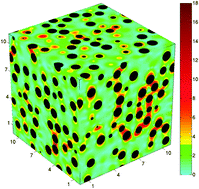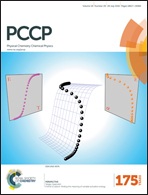Dipole correlation effects on the local field and the effective dielectric constant in composite dielectrics containing high-k inclusions
Abstract
Mixing dielectric polymers with high permittivity (high-k) inclusions can affect their electrical properties. In actuation applications of dielectric elastomers, the polarized inclusions generate additional volume polarization-related electrostriction. In energy storage applications, it is possible to store more energy in dielectric composites because of additional polarization of the inclusions and interfaces. However, mixing an electroactive polymer with high-k inclusions also brings several disadvantages. The expulsion of the field from the interior of high-k fillers and the presence of two poles on the filler surface along the applied field direction result in higher local fields EL near the inclusion poles. The resulting field enhancement lowers the breakdown field (Eb) threshold for the material and therefore compromises the actuation and energy storage capabilities of dielectric composites. To mitigate this issue, the dependence of EL on the morphology of inclusion distribution, the field localization effect in chained configurations, and the role of the dipole–dipole correlation effects in the enhancement of the dipolar field of inclusions are analyzed. We show that the dipolar correlation effects are strong in large inclusion composites and their contribution to the inclusion dipole moment μ and to the local fields EL can reach 30–50%. A new method for deriving the composite permittivity from the field EL distribution, based on a caged probe technique, is also presented.


 Please wait while we load your content...
Please wait while we load your content...